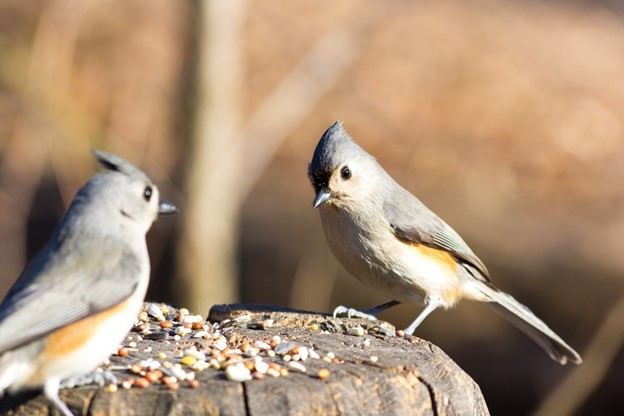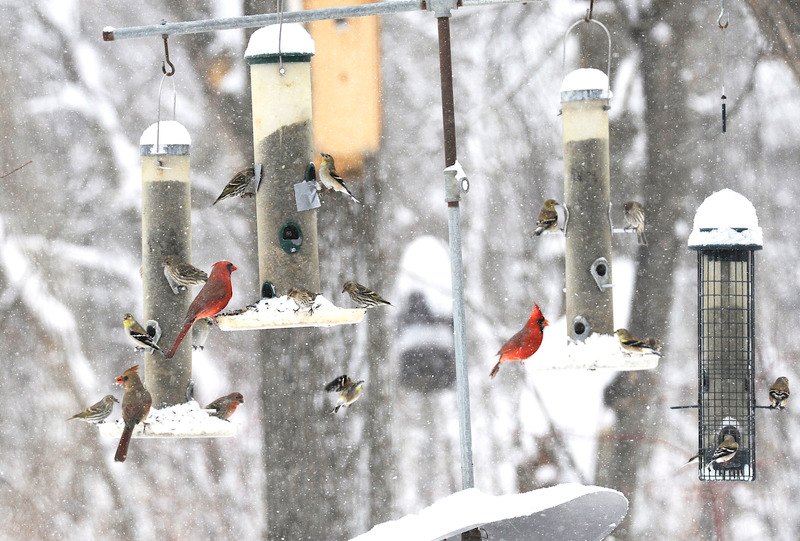The Bird Feeder Conundrum
 Birds have long been popular with people of all backgrounds. A survey from the United States Fish and Wildlife Survey from 2024 showed that more than 6 out of every 10 dollars spent on wildlife-related recreation (including hunting and fishing) came from bird activities such as watching and feeding. With their beautiful diversity of colors and songs, it’s not surprising that people want to get a closer look. What better way to do so than to get the birds to come to you. With bird feeding, not only do you get a close-up view of wildlife from your kitchen window, but you also get a feeling of doing good, whether that’s true or not. The psychological benefits of feeding birds should not be overlooked, and many times a strong sense of stewardship and environmentalism can be sparked by these avian encounters. That doesn’t mean there aren’t dangers involved with providing food to wildlife.
Birds have long been popular with people of all backgrounds. A survey from the United States Fish and Wildlife Survey from 2024 showed that more than 6 out of every 10 dollars spent on wildlife-related recreation (including hunting and fishing) came from bird activities such as watching and feeding. With their beautiful diversity of colors and songs, it’s not surprising that people want to get a closer look. What better way to do so than to get the birds to come to you. With bird feeding, not only do you get a close-up view of wildlife from your kitchen window, but you also get a feeling of doing good, whether that’s true or not. The psychological benefits of feeding birds should not be overlooked, and many times a strong sense of stewardship and environmentalism can be sparked by these avian encounters. That doesn’t mean there aren’t dangers involved with providing food to wildlife.
Congregating birds in one location can lead to many issues that can impact survival. Imagine sharing a plate with twenty other people for an entire year without cleaning it once. Sounds appetizing! In such close quarters, diseases are more readily spread from one individual to the next which can lead to devastating effects on bird populations. Bird predators like that neighborhood cat you call Pumpkin also benefit from bird feeders and their tendency to attract little snacks all in one place. “But all those birds would starve if I didn’t feed them!” No, they wouldn’t, but they appreciate your effort! There’s natural food out there for birds. It’s up to them to find it. Also remember that not all birds are meant to survive. It’s a sad part of nature that unfortunately needs to happen otherwise we’d be covered in birds.
With all of that being said, there is a way for people to continue feeding birds AND keep birds relatively safe at the same time, but it requires increased effort on your part.
- Clean your bird feeders regularly. By washing and cleaning your bird feeders at least once every two weeks, you can reduce the risk of spreading avian diseases. Use a solution of nine parts water to one part bleach to clean feeders and remove visible debris before washing. The more frequent the cleaning, the better (remember the shared plate mentioned above). Thoroughly dry feeders before adding seed to avoid mold.
- Install lots of bird feeders in many locations to avoid large bird congregations.
- Clean up the areas under bird feeders. Birds love to multitask when they eat, which can create quite the mess under the feeder. Thank goodness humans don’t tend to copy this behavior!
- Install predator guards near feeders to prevent birds becoming easy prey. Avoid feeding birds directly from the ground which can increase the chances of predation. And try to keep Pumpkin and all his kitty friends inside where they are safer and more comfortable.

Sources:
National Survey of Fishing, Hunting, and Wildlife-Associated Recreation, USFWS
Dayer et al. 2023. Birds are not the only ones impacted by guidance to cease bird feeding. People and Nature.
by Amy Keigher, Natural Resources Agents, 2024
Additional Resources:
Avian Influenza Outbreak: Should You Take Down Your Bird Feeders? | All About Birds
Return to Natural Resources articles